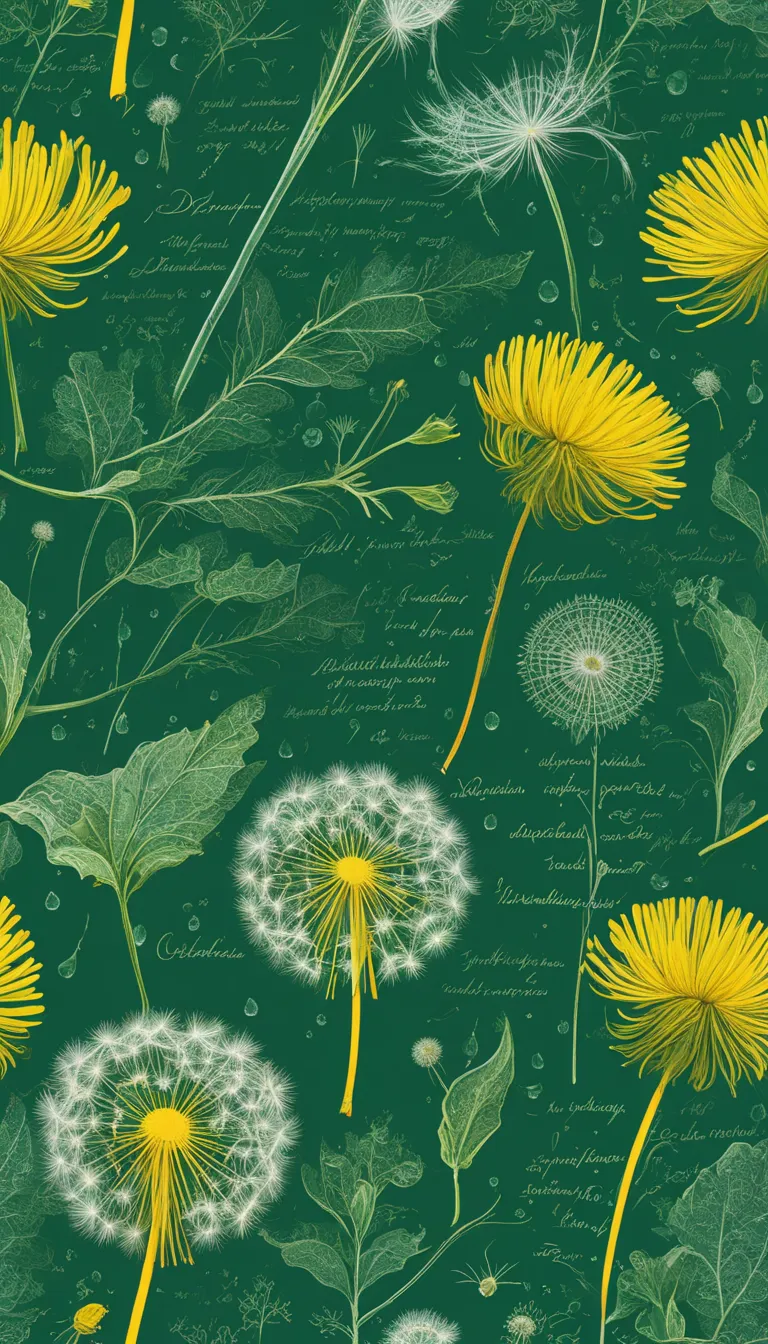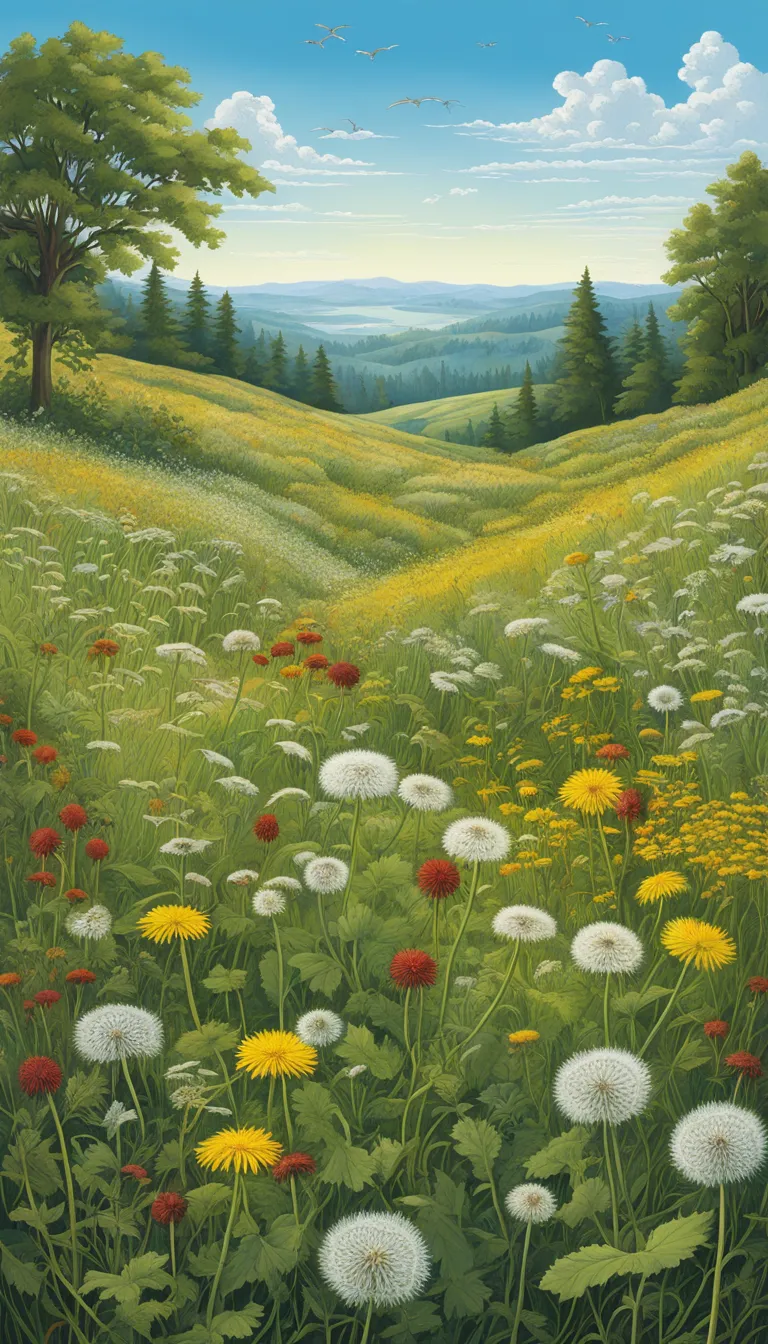Discover the world of dandelions, these vibrant yellow blooms that are often underestimated for their beauty and resilience. Despite being labeled as a common weed, the dandelion is a plant that bursts with surprise and explosion both in its appearance and its hardy nature. In this comprehensive guide, we’ll dive into the fascinating world of dandelions, offering tips on care, planting, and an exploration of the various types that dot landscapes around the globe.
The dandelion, with its sunshine-yellow petals and delicate seed heads, is a symbol of the power of nature to thrive in diverse conditions. It’s a plant that can make a home almost anywhere, from the cracks of a city sidewalk to the wide-open fields of the countryside. Its ability to adapt and flourish is a testament to its unexpected strength and beauty.
Whether you’re a seasoned gardener or a curious onlooker, the dandelion has much to offer. With proper care, these flowers can become a delightful addition to any garden or natural space. Stay tuned as we explore the intricacies of the dandelion, from its ecological significance to its place in folklore and herbal medicine. Prepare to be enlightened and inspired by the resilience of this remarkable flower.

What is Dandelion?
Dandelions, those vibrant yellow blooms that pop up in lawns and fields as heralds of spring, are far more than just weeds. Botanically known as Taraxacum officinale, the dandelion is a member of the Asteraceae family, sharing kinship with sunflowers and daisies. But what makes this flower so intriguing and resilient?
Ecologically, dandelions play a crucial role in the environment. They are early bloomers and as such, provide an essential source of nectar for pollinators like bees. Their deep taproots can break up compacted soil, making it more hospitable for other plants to grow. The dandelion’s ability to thrive in a variety of conditions is a testament to its adaptive prowess.
But there’s more to these flowers than meets the eye. Dandelions have been woven into folklore and are often associated with growth, transformation, and resilience. In herbal medicine, they have been used for centuries to treat a plethora of ailments, with every part of the plant from the roots to the flowers being utilized for its medicinal properties.
In the world of horticulture, dandelions are sometimes seen as a nuisance, but others embrace them for their simplicity and beauty. They can be a delightful addition to any garden, bringing a burst of color and life. So next time you see a dandelion, remember that it’s not just a weed, but a complex organism with a rich history and a role to play in our ecosystem.

How to Care for Dandelion?
Caring for dandelions might seem like a walk in the park, but these resilient flowers do have their preferences. If you’re looking to nurture a patch of these golden beauties, here’s what you need to know.
First things first, sunlight is a friend of the dandelion. These plants thrive in an area that receives a generous amount of sunshine. A full day of sun will keep them happy and blooming. However, they’re not picky and can tolerate partial shade as well.
When it comes to watering, dandelions are quite drought-tolerant. They don’t need much water to survive, but for optimal growth, a regular watering schedule is beneficial, especially during prolonged dry spells. Just be careful not to overwater, as this can lead to root rot.
The soil doesn’t need to be particularly rich or well-drained for dandelions to prosper. They’re not fussy about the soil type, but they do prefer a neutral to slightly alkaline pH level. You can easily test your soil’s pH and amend it if necessary.
Here’s a quick checklist for dandelion care:
- Location: Choose a sunny spot, but don’t worry if it’s partially shaded.
- Watering: Keep the soil moist but not waterlogged. Water during dry periods.
- Soil: Aim for neutral to slightly alkaline soil. Test and amend the pH as needed.
Remember, dandelions are hardy and can often take care of themselves, but a little TLC can go a long way in ensuring a vibrant display of these cheerful yellow blooms.

What are the Dandelion Varieties?
Dandelions, those ubiquitous yellow flowers that grace our lawns and fields, are often dismissed as mere weeds. Yet, they come in several varieties, each with its own unique charm and characteristics. Ever wondered if the dandelion you’re looking at is the common type or something a bit more exotic? Let’s dive into the world of dandelion diversity!
Most of us are familiar with the Common Dandelion (Taraxacum officinale), characterized by its bright yellow flowers and fluffy seed heads that children love to blow. But did you know there are other species that are just as fascinating? For instance, the Red-Seeded Dandelion (Taraxacum erythrospermum) features red seeds that set it apart from its more widespread cousin.
Here’s a quick rundown of some dandelion varieties:
- Common Dandelion (Taraxacum officinale) – The familiar, cheerful yellow flower with a globe of seeds that float away with the wind.
- Red-Seeded Dandelion (Taraxacum erythrospermum) – Notable for its reddish-brown seeds, this variety is less common but equally resilient.
- California Dandelion (Taraxacum californicum) – Native to California, this species is adapted to the unique climate and soil of the region.
- White Dandelion (Taraxacum albidum) – A rare variety with white flowers, mainly found in Asia.
- Russian Dandelion (Taraxacum kok-saghyz) – Originating from Central Asia, this species is known for its rubber-producing capabilities.
While these varieties may differ in appearance, they all share the dandelion’s signature resilience and ability to thrive in diverse conditions. Whether you’re an avid gardener or a curious observer, recognizing the various dandelion types can add a new layer of appreciation for these often-overlooked flowers.





